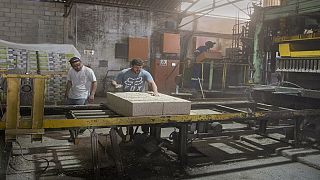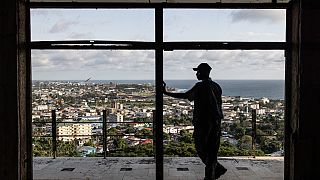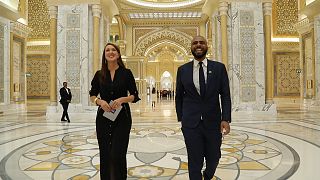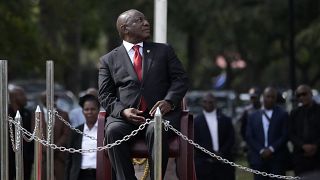Brazil
With its immaculate facade shining in the sun, the Copacabana Palace is Rio de Janeiro's most iconic hotel.
Since its opening on August 13, 1923, world-renowned heads of state, celebrities and royals have frequented the establishment that has an impressive view of Rio’s famous Copa Cabana beach.
The family of Octávio Guinle, the hotel’s founder managed the palace until 1989. It became part of the LVMH conglomerate in 2018.
"Copacabana Palace is a place of joy, a place for weddings, a place for parties where people want to have fun," the general lanager of the palace says.
"A word that stands out in our hotel [for me] is: Celebration! It is a hotel of celebration, of glamor.”
The guestbook is a true relic. White gloves are required to flip through the pages, filled with famous signatures, like that of the “King” Pelé, who drew a ball entering the goal.
One night in a suite overlooking the ocean costs over 1,000 US dollars.
Pearl of high society
At the end of the Hall of Fame, where the portrait gallery is displayed, there is a large photograph of the hotel taken just after its construction.
The contrast with the current landscape is surprising. The building seems almost isolated, surrounded by a vast expanse of sand, with only a few two or three-story houses along the shoreline.
It’s nothing like the row of buildings – including other luxury hotels – that now continuously rise along Copacabana Beach, one of the world’s most famous.
Designed by French architect Joseph Gire, the Copacabana Palace was inspired by iconic hotels built in the early 20th century on the French Riviera, like the Negresco in Nice and the Carlton in Cannes.
It was meant to be inaugurated in 1922, on the centenary of Brazil’s Independence, but several technical difficulties delayed the construction by a year.
Octávio Guinle, a Brazilian high society entrepreneur turned the Copacabana Palace into a must-visit spot, attracting artists like Edith Piaf, Ella Fitzgerald, and Frank Sinatra to perform in its legendary Golden Room.
When Rio was still the Brazilian capital before being transferred to Brasília in 1960, the hotel was also frequented by the local political elite, like President Washington Luís, who in 1928 was shot by his lover in one of the hotel’s rooms.
Injured, he was discreetly taken to the hospital. The Presidential press office later declared that he had suffered from appendicitis.
Local flavors
"It was a space for political meetings, artistic experimentation, and the launching of new talents… Translating a charming reality of Brazil," explains historian Thiago Gomide to AFP, the author of short videos that are successful on the Tá Na História (@tanahistoria) Instagram profile.
Prince Albert II of Monaco is one of the many who fell for the hotel's charms. "When he comes here, he hugs me, shakes my hand, jokes," Antonio Francisco dos Santos, who has worked at the Copacabana Palace for 28 years, reveals.
"He likes to swim and then eat fruits from here. He loves açaí, one after the other, and mango too," shares this assistant manager of the Pérgula restaurant, where a hearty breakfast with local flavors is served.
The pool has just been renovated, with pale green umbrellas and lounge chairs covered in tropical-patterned cushions. The facade has also been repainted with a pearly white tone, just like it was a hundred years ago.
"We’ve brought it as close as possible to what the hotel was in 1923, adding cutting-edge technology. The new lighting will further enhance the beauty of the building," explains Ulisses Marreiros, whose motto is "honor the past and inspire the future."













01:55
South Africa marks Freedom Day ahead of tough general election
02:20
South Africa to mark 30 years of freedom amid inequality and tense election ahead
Go to video
Brazil: Former striker Robinho begins 9-year jail term for rape in rural penitentiary
01:53
All 5 attackers killed, ending Somalia hotel siege in which 3 soldiers died
01:35
Brazil pushes for stronger representation of developing nations as G20 FM meeting opens